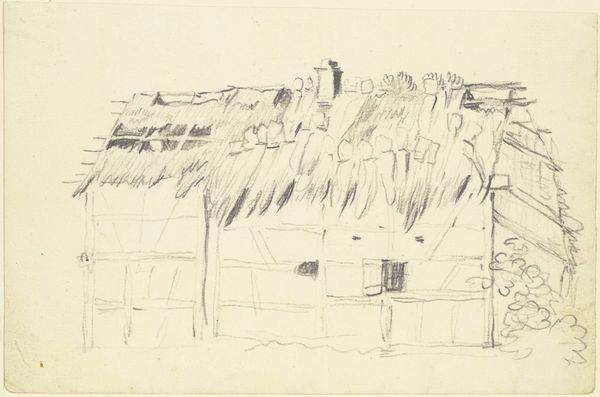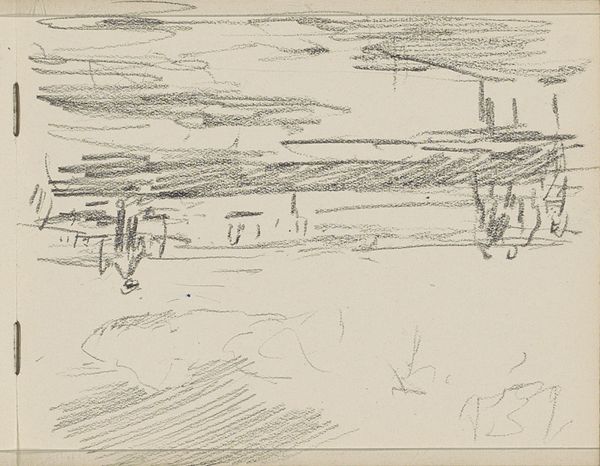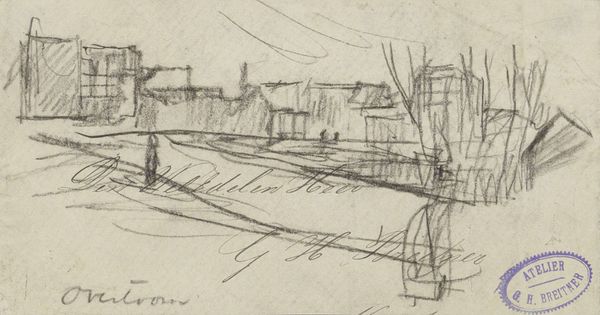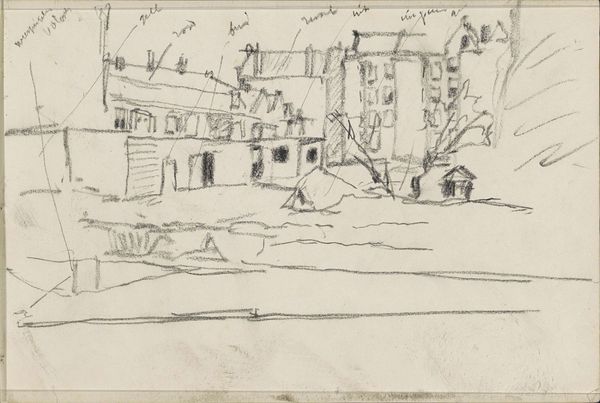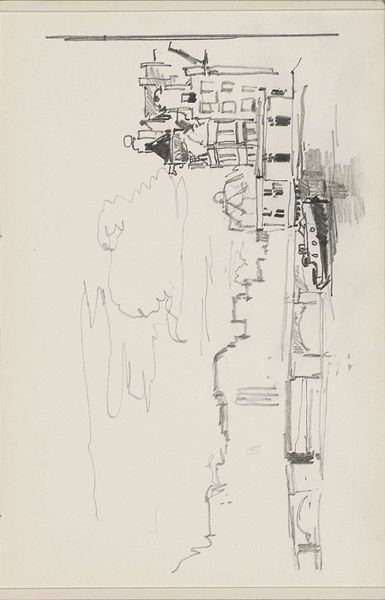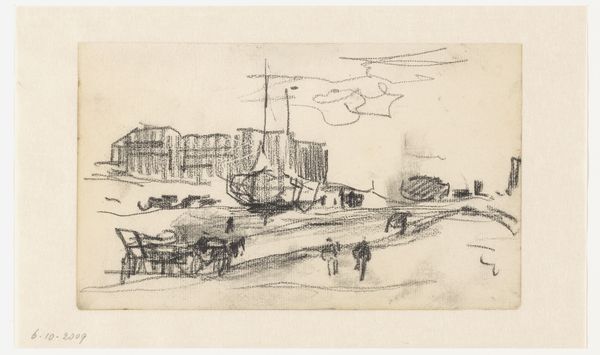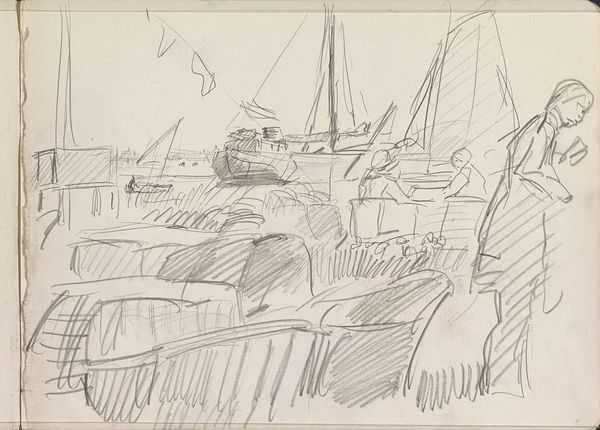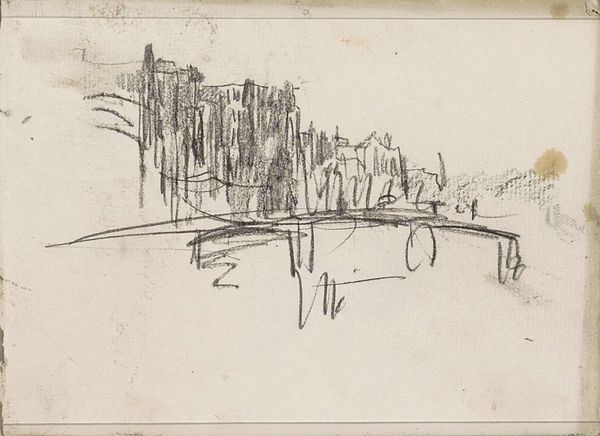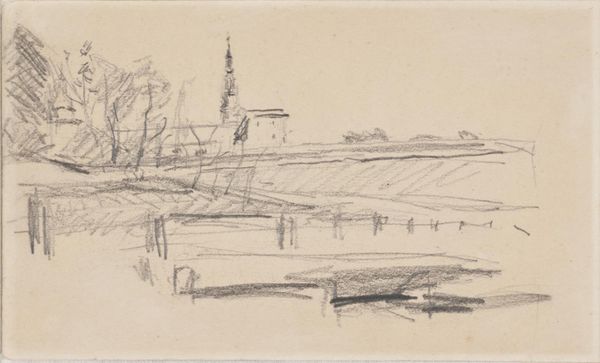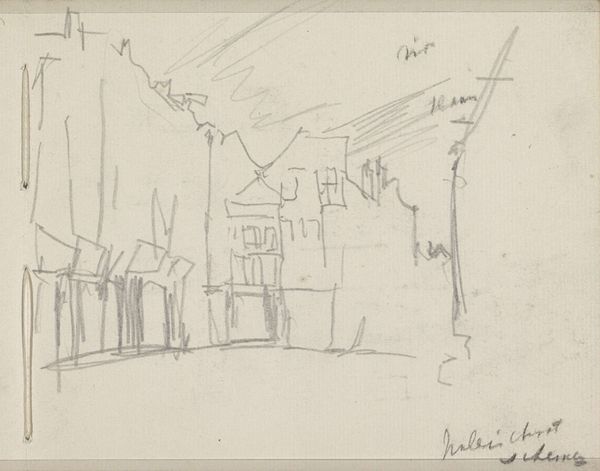
drawing, pencil
#
drawing
#
impressionism
#
landscape
#
pencil
Copyright: Public Domain: Artvee
Curator: James Ensor's pencil drawing, "Ostend, View from the Station," presents a minimalist rendering of a seaside scene. Editor: There's a starkness to it. The lack of shading creates an almost unsettling quietude; a ghost of a landscape. Curator: Consider Ensor’s position within the late 19th-century Belgian avant-garde. Ostend, as a port city, represented a nexus of social and economic change. How might this rapid shift be reflected in the seeming emptiness and isolation captured in this sketch? The lack of distinct detail evokes a sense of transience. Editor: Precisely. Notice how Ensor reduces the architectural forms and boats to their most basic geometries, their outlines. The sparse use of line seems almost provisional, a fleeting impression rather than a definitive statement. He creates depth through very economical means. Curator: This ties into broader discussions of modernity and alienation. The artwork invites contemplation on how urbanization and industrialization impact social relations. Who populates the boats in the harbor and in which social stratums do they reside? Editor: Perhaps that's a deliberate void to emphasize the structure. What about Ensor’s choice of perspective? The elevated vantage point of the station places the viewer in a detached position, observing the scene rather than participating in it. How does that positionality then alter the feeling and interpretation? Curator: Ensor's choice to depict Ostend, a city deeply entwined with colonial history and maritime exploitation, must influence our interpretation. Editor: I am more impacted by the simplicity and stark contrasts in this sketch. The reduction of form and shadow in it create an odd sense of peace for me. Curator: "Ostend, View from the Station" isn’t simply a pretty picture. Editor: True; its beauty resides in the austerity.
Comments
No comments
Be the first to comment and join the conversation on the ultimate creative platform.
